How to create Windows Virtual Machines
CloudPe offers flexible and scalable infrastructure to meet the growing demands. At Cloudpe, you can quickly set up and manage virtual machines tailored to your specific needs. Whether you’re hosting applications, running development environments, or analyzing data.
To create a Windows Virtual Machine on CloudPe Advanced Dashboard, Click Here for more details.
To create a Virtual Machine on CloudPe Dashboard, follow the below steps:
1. Log in to your CloudPe Dashboard.
2. click on ‘Virtual Machines‘ in the main dashboard to access the VM management interface.
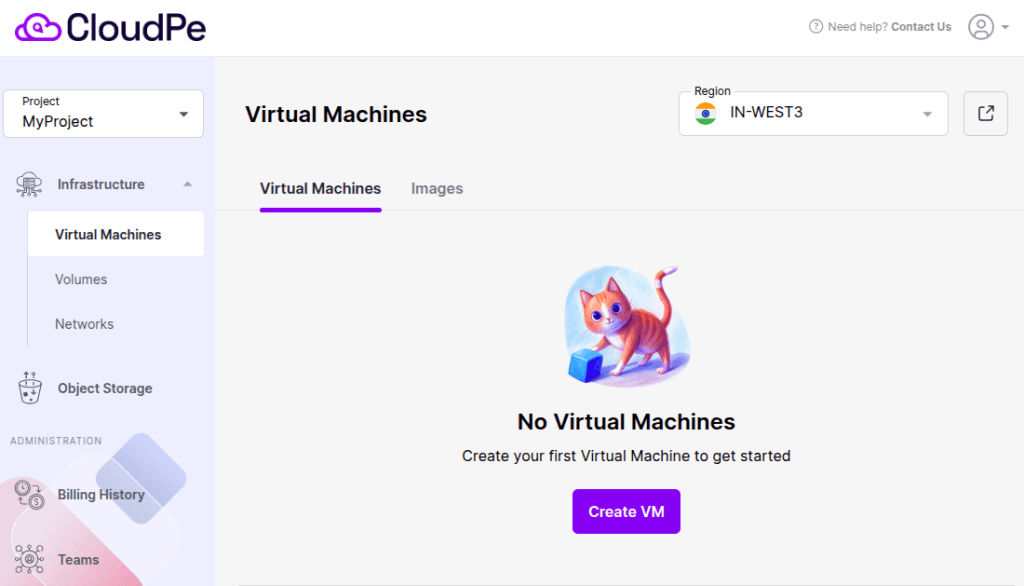
3. Select the Project:
In the Project Section, select the project from the Dropdown Menu in which you want to create the Virtual Machine.
For detailed instructions on creating a project, Click Here for more details.

4. Confirm or Select the Location:
Currently, the default location is IN-WEST3, which is automatically selected for your virtual machine.

As our platform evolves, more locations will become available. When additional locations are added, you will have the option to choose a different location that best suits your requirements.
5. Select the Base OS Image:
Select the base OS image for your virtual machine from the list of available images, and click to select the operating system that fits your needs. Or if you want to use a Custom Image then you can select one from the added Custom Images.
To know more about Adding Images, Click Here for more details.
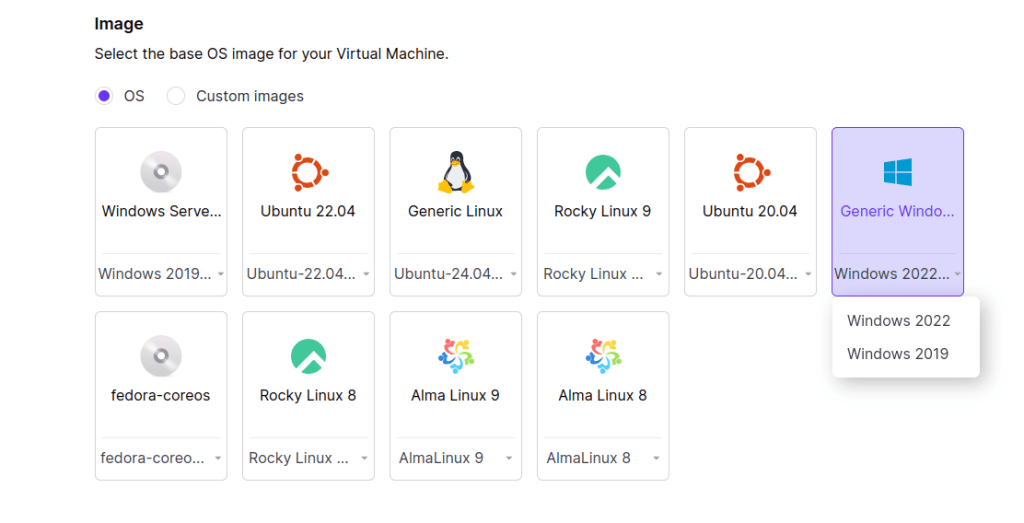
List of CloudPe Supported Guest Operating System, Click Here for more details.
6. Select the Flavor (CPU and RAM Allocation):
Click on the Flavor dropdown to view available options. These flavors represent different configurations of CPU, RAM, and other resources.
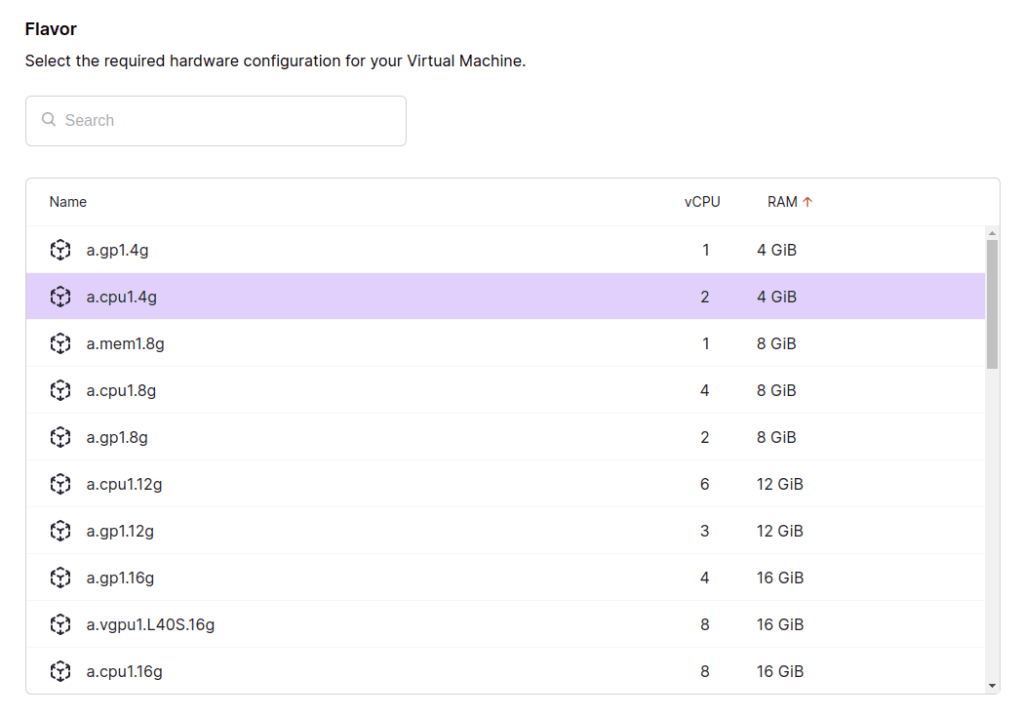
When selecting a flavor, make sure it meets the hardware requirements of the guest operating system you selected earlier. For example, some operating systems may require more CPU or memory to function optimally.
7. Configure the VM Disks:
In the Volumes section, you’ll see the default boot volume for your virtual machine. This volume holds the operating system and other essential files.
- Verify that the default volume is large enough for your operating system. If it’s too small, you will need to adjust the size in the Edit Volume window to meet your needs.
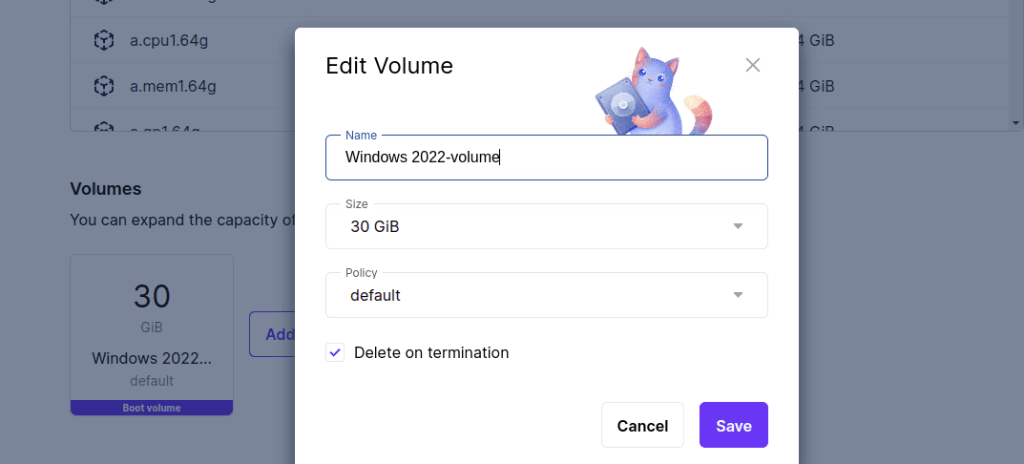
Once you’ve adjusted the volume size, click Save to apply the changes.
If you want to add extra volumes, click on Add Volume, adjust the volume size, and click Save to apply the changes. You can also attach the created volume by clicking the dropdown arrow.
To know more about Creating Volumes, Click Here for more details.

- If you require a custom volume size (e.g. 80 GiB, 150 GiB), you can create a custom-sized volume through the CloudPe Advanced Dashboard and attach it during the virtual machine creation process.
- Later you can Resize the Volume of your Virtual Machine Or Attach non-boot volumes to your Virtual Machines.
- For more, check Managing Volumes.
8. Add network interfaces to the VM:
In the Add Network Interface window, choose the compute network you want to connect the virtual machine to.
- A public network allows external access to your VM, making it suitable for hosting web servers, APIs, or any services requiring internet connectivity.
- Click Add Network Interface and select a public IP pool from the Dropdown arrow. Check the Assign automatically option to let the system assign an IP address.
- You can add an IPv4 or IPv6 address as needed by clicking ADD and remove it by clicking the Delete icon.

- Optionally, you can also add secondary IPv4 and IPv6 addresses in the Secondary IP addresses section. Unlike the primary IP, secondary IP addresses are not automatically configured in the guest OS. You will need to assign them manually within the virtual machine.
- If you’ve selected a network with IP address management enabled, spoofing protection is turned on by default, and the default security group is selected. This security group allows all traffic to and from the VM.
- If you need a Private IP for your virtual machine, you must set up a Virtual Private Network.
To create a Virtual Private Network, Click Here for more details.
9. Assign a Name to Your Virtual Machine:
Enter a unique name for your virtual machine.

10. Advanced Settings
10.1. Assign a Password to your Virtual Machine:
- Enter a strong password for your virtual machine. This password will be required to log in to the VM once it is deployed.
Tip: Use a mix of uppercase and lowercase letters, numbers, and special characters to create a strong password.
- If you prefer, you can choose to set the password after the virtual machine has been created. You’ll be able to change or reset it at any time through the CloudPe dashboard.
10.3. Customization Script:
Provide user data to customize the VM after launch. User data can be in a YAML-based configuration file or a shell script that runs commands on the VM upon launch.

After configuring all of the VM parameters, click on the Create Button to create your Virtual Machine.

Congratulations! Your virtual machine has been successfully created and is now ready for use.
Note:- After creating the VM, make sure that these steps are performed before trying to take the RDP
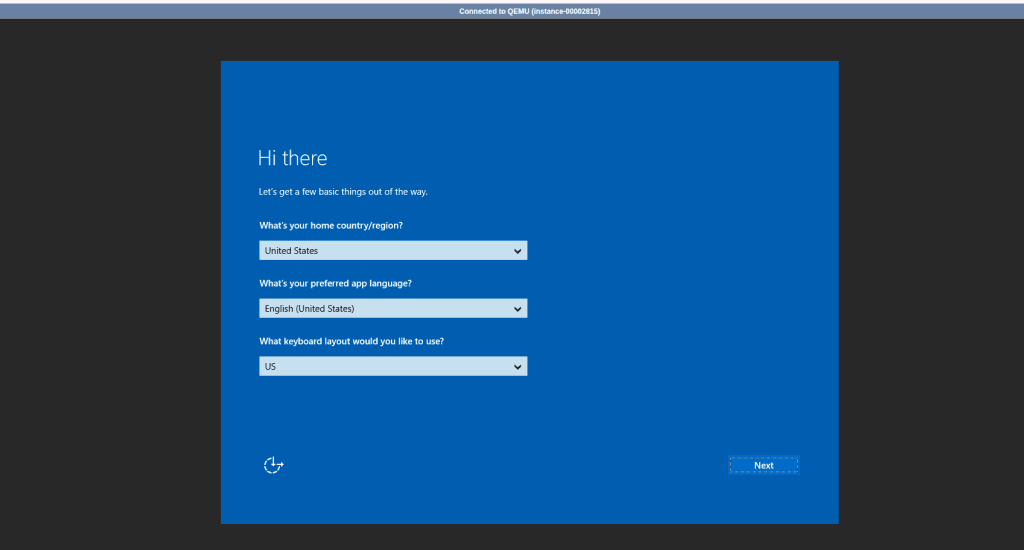
Region and Language Settings
• Select your Country/Region from the dropdown.
• Choose your preferred app language.
• Select the keyboard layout you want to use.
• Click Next to move forward.
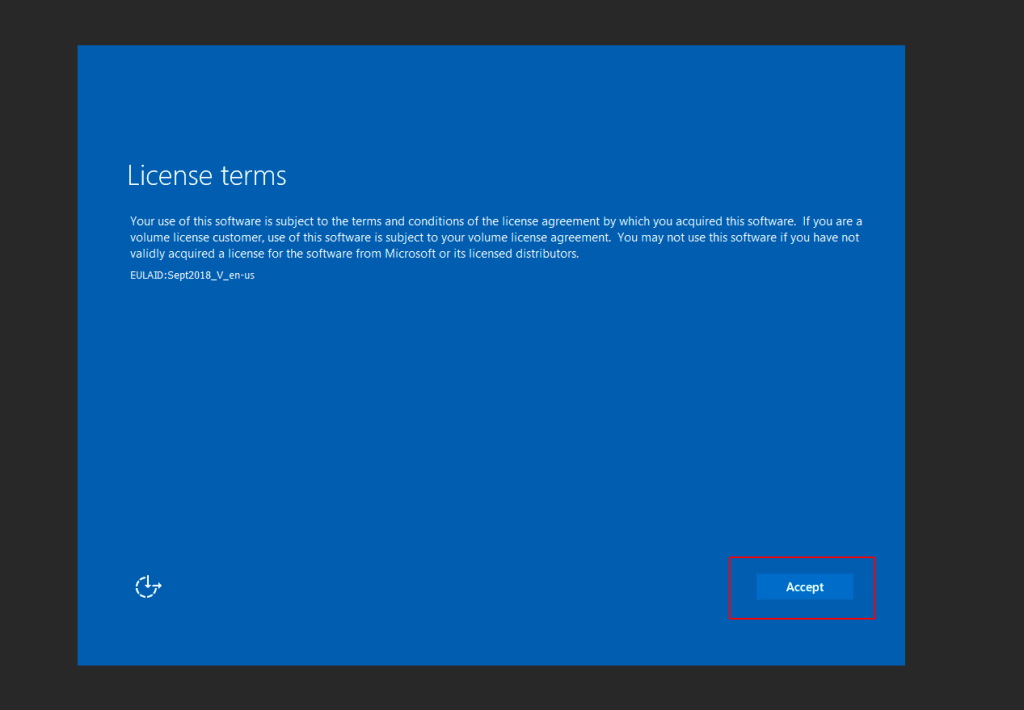
Accept License Terms
• Read through the License Terms.
• To proceed, click Accept.
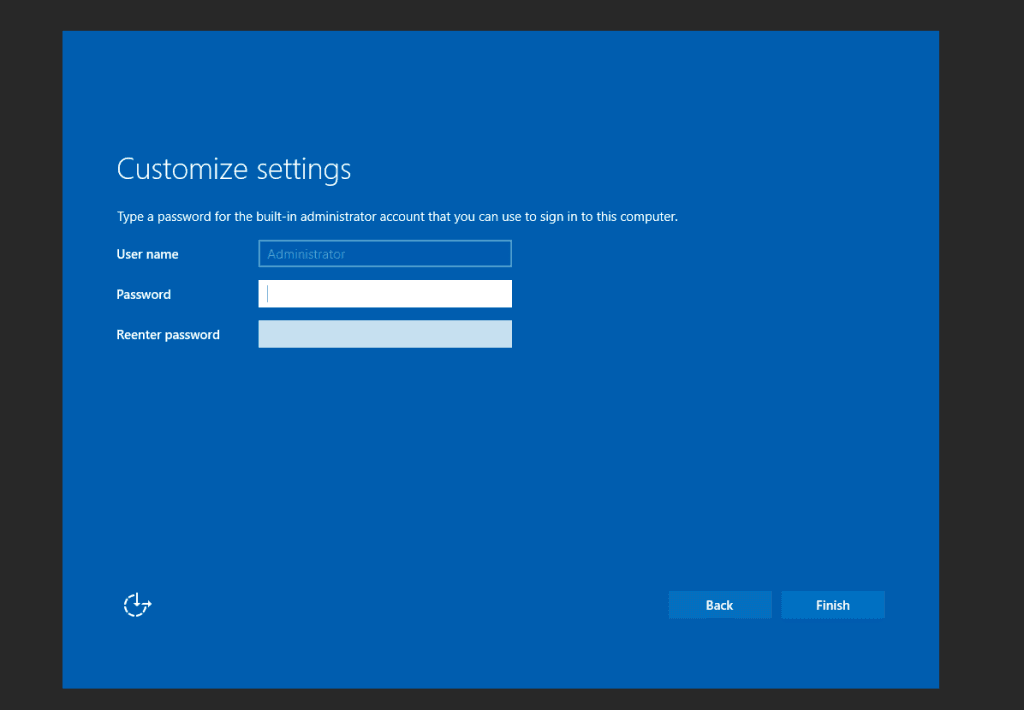
Customize Administrator Password
• You need to set a password for the built-in Administrator account.
• Enter a strong password in the Password field.
• Re-enter the same password in the Re-enter password field.
• Click Finish to continue.
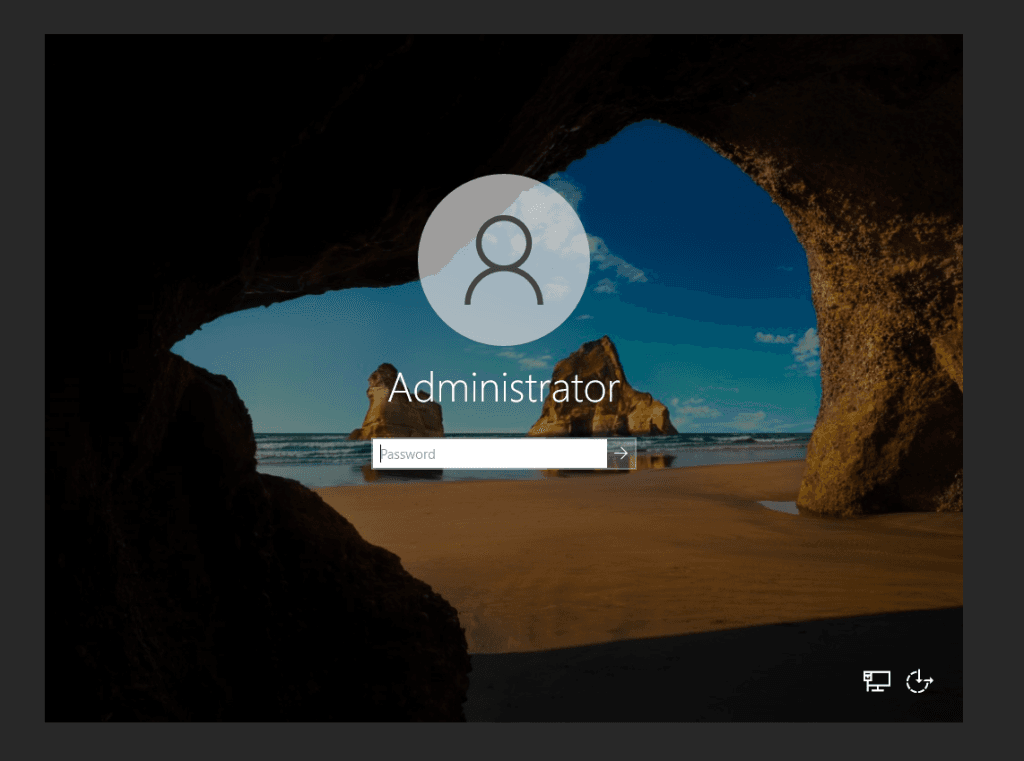
Initial Login Screen
• Click the arrow button (→) or press Enter to proceed.
• You can access it using the password that you have set during the setup process
• On this screen, you will see the Administrator login prompt.
• Enter the password you created for the Administrator account.
To manage the created Virtual Machine, Click Here for more details.
How to connect to a Windows VM via RDP
Remote Desktop Protocol (RDP) is a popular method to access Windows systems remotely. If you have a Windows Virtual Machine (VM) and want to access it from a Linux system, you can use xFreeRDP, a lightweight and efficient RDP client for Linux.
To get RDP access of Windows Virtual Machine, Click Here for more details.
You can reset the password from the dashboard.
Select the VM for which you want to reset the password, then click on “Actions” and choose “Set Password.”
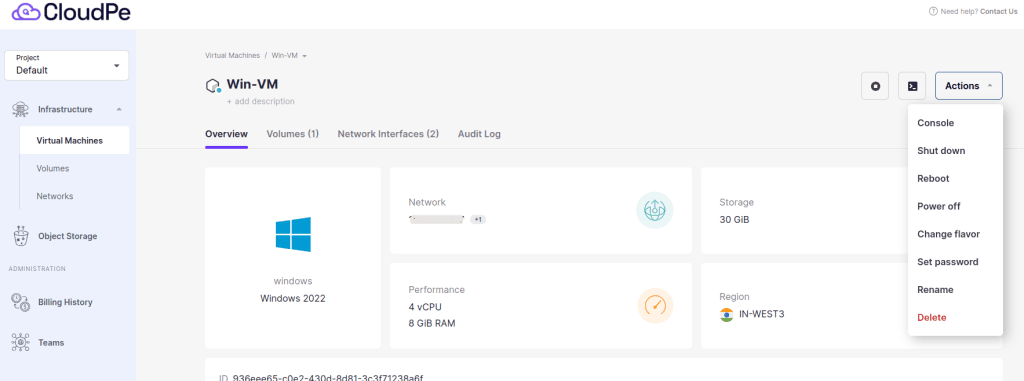
Set password

Your password has now been successfully reset
Reset password of windows VM using console.
To reset the password of Windows VM using console, Click Here for more details.